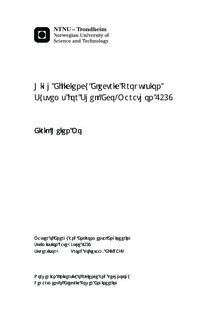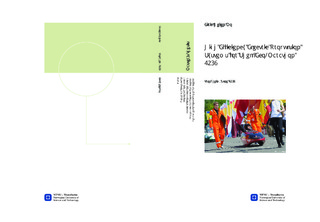| dc.description.abstract | DNV GL Fuel Fighter is a team that have been participating in Shell Eco-Marathon (SEM) each year since 2008. The members vary for each year and are mainly NTNU students in their fourth or final year of their master s program. SEM is not like a regular race. In order to win you don t necessarily need to have the fastest vehicle, but the most energy efficient one. Energy used from the batteries was measured with a joulemeter. After finishing a valid competition attempt the measured joules consumption is used to calculate a km/kWh result. The vehicle with the highest km/kWh result wins the competition. SEM 2014 was arranged in Rotterdam, Netherlands. The 2014 team decided to bring two vehicles to the competition, one participating in the UrbanConcept class and another in the Prototype class. The urban concept vehicle had been reworked and reused since it was built in 2008. The prototype vehicle was built from scratch for the 2014 competition.
The work presented in this thesis is related to the electric propulsion system developed for both the urban concept and the prototype vehicle. This system is divided into four different sub systems in order to be described in detail: The electric motor, inverter, controller and encoder. All of the electric motors considered were of the type permanent magnet synchronous machine (PMSM).
Two electric motors was considered for the prototype vehicle: The EC 60 flat and the AXI motor. The EC 60 flat motor was rated for low power purposes. Early simulation model results concluded that the motor would not be able to withstand the expected loads. This conclusion was confirmed with a motor malfunction on the motor test rig. The AXI motor had higher power ratings and was used for the competition. Two motors was also available for the urban concept vehicle, but one of them broke, so the other was used. An efficiency diagram was produced for the urban concept vehicle motor by running it on a motor test rig. The tests concluded that the motor was most efficient when driving faster than 29 km/h.
The motor controller used had to be purpose-built for SEM. This was a new rule for the 2014 competition. The final motor controller solution developed for SEM 2014 was made by combining a purpose-built two-level three-phase voltage source converter and a field-programmable gate array (FPGA). These two parts are referred to as the inverter and controller respectively, in the electric propulsion system.
For the rotor position measurement optic encoder with index channel was used. There were some issues with the urban concept vehicle encoder solution during the competition.
The end result was a 3rd place in the urban concept class and a 7th place in the prototype class. The final result in the urban concept class 2014 was actually better than the final result with the same vehicle in 2013, if the solar power is taken out of the equation.
Suggested electric propulsion system improvements for SEM 2015 preparations are found at the end of this thesis. | |

